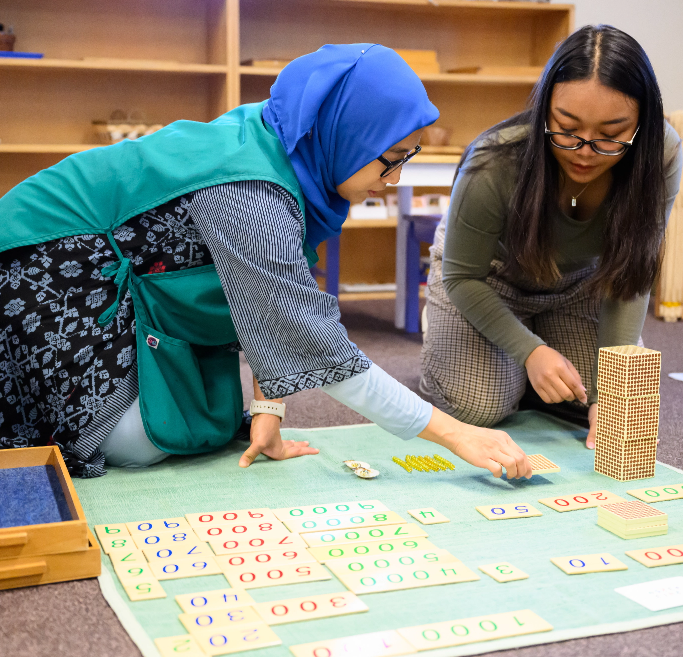
Why Stay in Montessori?
Montessori education continues on through secondary school – learn the benefits of having your child progress with Montessori education past primary school. If there are no secondary Montessori school options in your area, learn more about transitioning below.
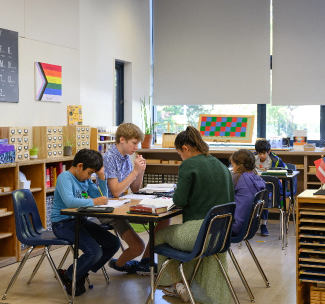
Mixed Age Classrooms
Taking the time to learn together
In the original Casa dei Bambini founded by Dr. Maria Montessori in 1907, children ages 21/2 to 6 learned together in a multi-age setting. Dr. Montessori saw that older children helped younger ones, fostering mutual growth-an idea central to the Montessori Method.
The Method also features a 3-year learning cycle, where children stay with the same teacher, growing together. Older students become mentors, while younger ones learn from them. Each cycle ends with students advancing to the next level.
If your child starts in a Montessori setting, you might wonder about the benefits of continuing through Elementary and into Secondary school.
What to Expect from an Infant & Toddler Program
Moving up from Infant & Toddler Programs
In a Montessori environment, even the youngest children enjoy freedom of choice, with gentle guidance from teachers. As they grow from Infant programs (birth to 18 months) to Toddler programs (18 months to age 3), they transition into Early Childhood, where they spend 3 years in a multi-age group.
In this setting, infants and toddlers experience a peaceful, supportive environment that nurtures their natural curiosity, independence, and sense of discovery.
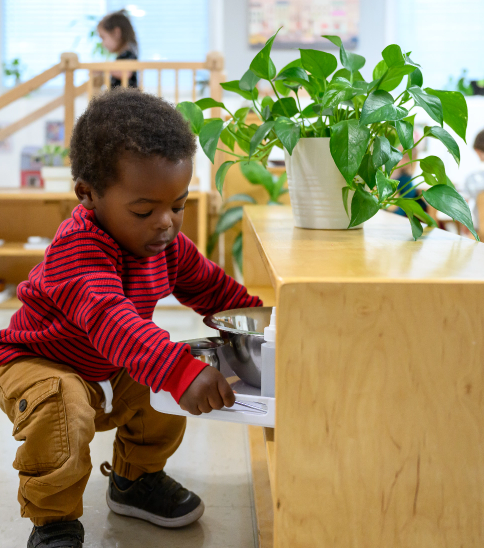
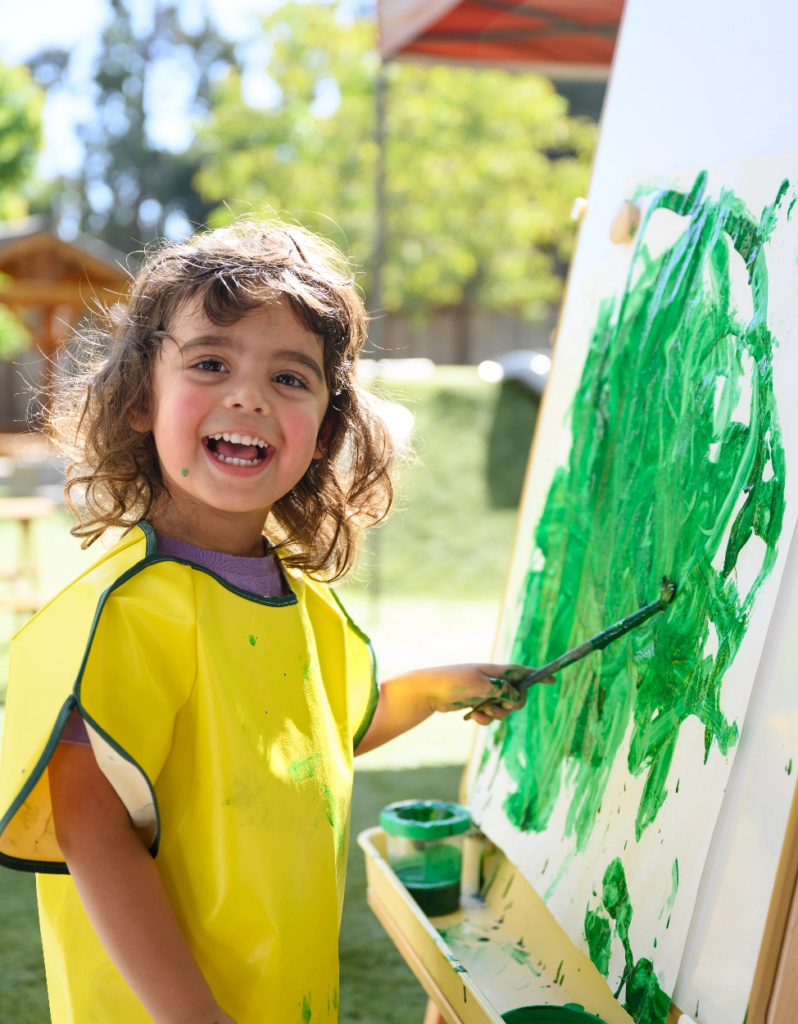
What to Expect from Early Childhood Programs
What to expect from Early Childhood Programs
Working with younger children enhances older children’s leadership skills. In their third year of Early Childhood-Kindergarten-students take on leadership roles, applying what they’ve learned over the previous 2 years.
The Kindergarten curriculum is tailored to their development, introducing advanced concepts to prepare them for Elementary school. By the end of Kindergarten, they are well-prepared to advance to the next level.
What to Expect from Elementary Programs
Continuing in Montessori through Elementary offers benefits similar to Early Childhood but in a different way. Children engage with “big ideas” and explore topics driven by their own interests, leading to deeper engagement. They often share their findings with peers and present projects, gaining early public speaking experience.
Elementary Montessori teachers leverage small-group work, allowing children to hear diverse ideas and perspectives. This fosters creative thinking and problem-solving.
Students work at their own pace, collaborating with peers and choosing projects. The focus on mastery and non-competitive learning supports both academic and social-emotional development. Montessori Elementary emphasizes learning at one’s own pace, exploring individual interests, and holistic development.
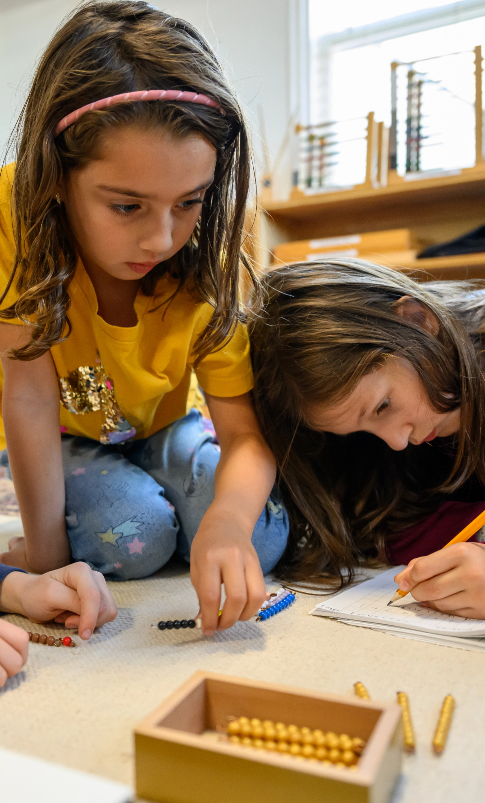
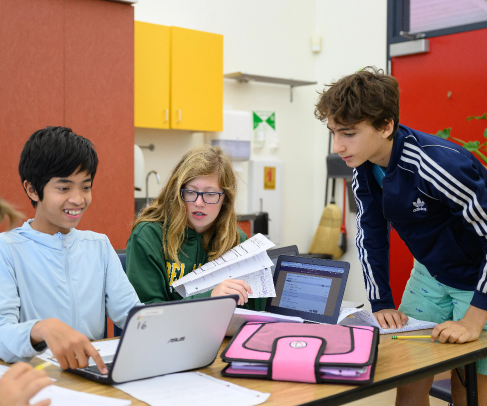
What to Expect from Secondary Programs
Montessori education extends through Secondary levels-Middle and High School-offering a learning environment that combines rigorous academics with purposeful work. This prepares adolescents to become confident, capable adults.
Montessori Secondary programs foster student leadership and collaboration through:
- Daily student-led community meetings
- Activities like Socratic discussions, inquiry-based problem solving, and diverse learning methods
- Classroom community involvement and leadership roles
- Technology that is used responsibly, with more focus on interactive learning and less screen time.
The curriculum features:
- Micro-economic experiences, such as running a business or selling at a farmer’s market, to understand currency and work
- Field work, including land labs, camping, internships, service learning, and outdoor education trips
Transitioning from Montessori
When your child transitions from Montessori—whether graduating from Secondary programs or moving due to a lack of local options—they typically adjust well to a new school environment. Montessori students are adaptable, self-reliant, and accustomed to working harmoniously in a classroom community.
Montessori students often have strong academic skills and exhibit maturity, responsibility, and leadership. They are used to making independent choices and contributing to their community.
However, they may notice differences in their new school, such as following a teacher’s lesson plan, sitting in assigned seats, or being in a single-age classroom. Adjusting to a more structured environment might be challenging, but older students generally adapt well, impressing new teachers with their leadership, self-motivation, and organizational skills.
Montessori FAQs
Do Montessori students take standardized tests?
Public Montessori schools are mandated to administer the same standardized tests as other public schools.
Some private Montessori schools also administer standardized exams, particularly if they will be required by schools into which their students may transition. Other schools choose not to administer these tests.
How and when did the Montessori method start?
In 1906, Dr. Maria Montessori, an Italian educator, physician, and scientist, who had just judged an international competition on the subjects of scientific pedagogy and experimental psychology, was invited to create a childcare center in San Lorenzo, a poor, inner-city district of Rome. There, she would be working with some of the area’s most disadvantaged, and previously unschooled, children.
She opened the doors on January 6, 1907, calling the center the Casa dei Bambini—Italian for “Children’s House.” Dr. Montessori was determined to make the Casa a quality educational environment for these youngsters, whom many had thought were unable to learn—and she did.
To learn more about the history of Montessori, visit this page. To learn more about Dr. Maraia Montessori, go here.
How do I know if a school is providing an authentic or high-fidelity Montessori education?
Since the word ‘Montessori’ is public domain and anyone can use it, it’s important to look out for the 5 core components of Montessori education:
- Trained Montessori teachers
- The multi-age classroom
- Utilizing Montessori materials
- Child-directed work
- Uninterrupted work periods
For more details on these 5 Core Components, visit this page. Please note that public Montessori schools may not all be able to execute across these core components.
For additional information on quality Montessori schools, see the Pathway of Continuous School Improvement, and read about AMS Accredited Schools. For more information on Choosing an AMS Member School, go here.
How does Montessori assess student progress?
Montessori students typically do not receive letter or number grades for their work. Grades, like other external rewards, have little lasting effect on a child’s efforts or achievements. The Montessori approach nurtures the motivation that comes from within, kindling the child’s natural desire to learn.
A self-motivated learner also learns to be self-sufficient, without needing reinforcement from outside. In the classroom, of course, the teacher is always available to provide students with guidance and support.
Although most Montessori teachers don’t assign grades, they closely and continuously observe and assess each student’s progress and readiness to advance to new lessons. Most schools hold family conferences a few times a year so parents may see samples of their child’s work and hear the teacher’s assessment—and perhaps even their child’s self-assessment.
How is Montessori education “scientifically-validated”?
A growing body of evidence demonstrates the success of Montessori’s holistic approach in achieving strong results on both academic and non-academic student outcomes. Find the specific research citations here.
How many students are typically in a Montessori class?
Unlike some private schools, which strive for very small classes, Montessori values the lessons of community that can happen when the size of the class is somewhat larger. A larger, multi-age class can encourage students to rely on themselves and their peers as resources, rather than going directly to a teacher for support first.
Montessori classes at the Early Childhood level and above might include an average class size of 20 – 30 students whose ages span 3 years. All members of the community benefit from this configuration. Older students are proud to act as role models; younger ones feel supported and gain confidence about the challenges ahead. And all children develop their independence as they problem solve with their peers within their classroom community.
Classes for infants and toddlers are smaller, with typically 10 – 15 children. Often the teacher-to-child ratio for this youngest age group is set by state licensing standards.
Is Montessori appropriate for children with disabilities and neurodivergences?
The Montessori Method of education provides a nurturing, supportive environment for children of all abilities and learning styles. This includes children with disabilities and neurodivergences, including physical disabilities; learning differences in reading, writing, spelling and/or math; ADHD; and autism spectrum disorders.
Children learn in multi-age classes, with the same teacher, for 3 years. This sustained connection creates a stable, predictable environment for adults and children alike. Students are able to attend to their learning, rather than having to adjust to new people and new routines every year. For more information on Montessori and children with disabilities and neurodivergences, please visit this page.
Is there such thing as a public Montessori school?
There is! More school districts are including Montessori programs as a parent choice. Currently, more than 500 public schools nationwide offer Montessori programs. Public Montessori education is a popular option for preschool through high school students attending all types of publicly funded schools—neighborhood, magnet, and charter.
Because they are publicly funded, public Montessori schools are open to all children. They do not generally require incoming students to have prior Montessori experience; however, some restrict the admission of children without Montessori experience to lower Elementary levels only.
Students are often admitted to public Montessori programs by lottery because there tend to be more applicants than openings. While public Montessori programs are tuition-free, tuition may be charged for 3- to 4-year-olds in public school pre-kindergarten classes that are not fully covered by state funding. If required, pre-kindergarten tuition is usually paid on a sliding scale, depending upon the family’s eligibility for the National School Lunch Program (free, reduced, or full-pay).
What are common misconceptions about Montessori education?
There are a handful of misconceptions and myths about the Montessori method, and they are often contradictory. To learn more about these common misconceptions, read this post on our Montessori Life Blog!
What are the core principles of Montessori education?
There are five core components of Montessori education: Trained Montessori teachers, the multi-age classroom, using Montessori matierials, child-directed work, and uninterrupted work periods. Click here to learn more about these Five Core Components of Montessori.
What does a typical Montessori classroom layout look like?
As soon as you enter a classroom, you know that something different is afoot. Montessori classrooms are immediately recognizable. You will see children working independently and in groups, often with specially designed learning materials; deeply engaged in their work; and respectful of themselves and their surroundings.
To see inside each age group’s classroom, visit this page.
What does transition from Montessori to traditional school look like?
A growing body of research comparing Montessori students to those in traditional schools suggests that in academic subjects, Montessori students perform as well as or better—academically and socially—than their non-Montessori peers. These benefits grow as children have more experience in a Montessori environment.
Most Montessori schools report that their students are typically accepted into the high schools and colleges of their choice. And many successful graduates cite their years at Montessori when reflecting on the important influences in their life.
What is a Montessori school?
Over a century ago, Italian physician Dr. Maria Montessori developed a child-focused approach for educating children, and it has been transforming schools around the globe ever since.
Montessori classrooms are immediately recognizable. You will see children working independently and in groups, often with specially designed learning materials; deeply engaged in their work; and respectful of themselves and their surroundings. To see inside Montessori classrooms, visit this page.
The Montessori Method fosters rigorous, self-motivated growth for children and adolescents in all areas of their development—cognitive, emotional, social, and physical.
What kind of preparation and credentials should Montessori teachers have?
One must hold a bachelor’s degree or higher from a regionally accredited U.S. College/ university, or its equivalent, as well as a Montessori credential. AMS has several affiliated techer education programs available to earn Montessori credentials across all age groups.
An associate credential for Infant & Toddler and Early Childhood levels is awarded to those who have completed high school but do not hold a bachelor’s degree.
For more information on how to become a Montessori Educator, please visit this page. To learn more about AMS-affiliated teacher education programs (TEPs), visit this page.